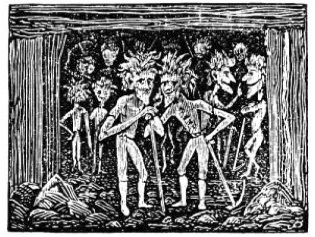By Kristy McCaffrey
Don’t miss ~
 Human males are saddled with a sexual desire that rarely
wanes. While other male species will see a spike in testosterone levels in
conjunction with the mating cycles of females, human males maintain a steady
concentration year-round.
Human males are saddled with a sexual desire that rarely
wanes. While other male species will see a spike in testosterone levels in
conjunction with the mating cycles of females, human males maintain a steady
concentration year-round.
Because ancient human females had such high iron needs due to
the many sources of blood loss in her lifetime (menses, childbirth, and
lactation), a peculiar adaptation occurred in the male—constant, high levels of
testosterone. One theory proposes that this pushed the male to take ever
greater risks—to hunt that giant animal that could trample and kill him—all to
return with iron-rich meat for the female and her offspring, his insurance plan
for sex. But the side effect of this has been a disparity in the sexual needs
of men and women.
Women require significantly more iron than men. Men have
incredibly high testosterone levels which create an intolerable sexual tension
that demands release. These two situations are intimately linked.
 In many early cultures, hunting was equated with sex. The
better hunter a man was, the more opportunities he had with willing females. To
state it crudely, a good hunt exchanged meat for sex. Females encouraged this
further by favoring males who were the best hunters, bringing back meat to
replenish her lost iron stores.
In many early cultures, hunting was equated with sex. The
better hunter a man was, the more opportunities he had with willing females. To
state it crudely, a good hunt exchanged meat for sex. Females encouraged this
further by favoring males who were the best hunters, bringing back meat to
replenish her lost iron stores.
But, ultimately, it was the adaptation of time that gave males the advantage they
needed to become successful hunters. And it was the females who imparted this
wisdom. Humans learned to anticipate the arrival of certain
animals—migrations—and to plan accordingly. They gained foresight.
Because the female had sent the male out to hunt due to her
need for iron and his never-ending desire for sex, she needed to arm him with
an advantage. Naturally, over time, men would take the credit for this, but
women know better. Due to her menstrual cycles, her sense of time changed. She
could forecast into the future, and she shared this knowledge with the men.
Learning to tell time is an exceptional evolutionary development, one that
humans share with no other species. (Some creatures do exhibit similar
behaviors, but these can be credited to instinct.)
Humans can plan, we can choose
a course of action. We understand
that one day, far in the future, the sun will cease to be. We know that we exist in a
three-dimensional paradigm. Even the most intelligent of other
species—dolphins, elephants, and higher primates—are unable to grasp these
issues.
And this is perhaps why a woman’s menstrual cycle is linked
to the motions of the Moon. Or, said in another way, because her cycles
mirrored a lunar one, an inherent sense of time was born within the female
mind.
In many cultures, menstruation is referred to as ‘the moon’.
In rural India, the moon is believed to be the ‘cause of all time’, just as it
is the cause of menstruation. Long ago, menses, the moon, and the duration of a
month came together and forever changed a female human’s ability to navigate a
different time-space.
 In his book Sex, Time
and Power: How Women’s Sexuality Shaped Human Evolution, author Leonard
Shlain writes, “Foresight has proved to be the sexiest idea that Mother Nature
came up with since Her clever invention of the penis two hundred million years
earlier. Whereas the penis significantly advanced the fortunes of every reptile
and mammal species that acquired one, foresight dramatically increased the
fortunes of only humans, at the expense
of all other species.”
In his book Sex, Time
and Power: How Women’s Sexuality Shaped Human Evolution, author Leonard
Shlain writes, “Foresight has proved to be the sexiest idea that Mother Nature
came up with since Her clever invention of the penis two hundred million years
earlier. Whereas the penis significantly advanced the fortunes of every reptile
and mammal species that acquired one, foresight dramatically increased the
fortunes of only humans, at the expense
of all other species.”
Why do women bleed so much? Shlain posits that it is so
humans could anticipate the future, something no other animal had ever before
accomplished.
So, back to the initial question—why do women lose so much
blood each month? The answer is because it was necessary for human evolution.
And what was this evolution? Linking a woman’s bleeding, an event too big to
ignore, with the cycles of the moon taught humans how to tell time. The ability
to practice foresight was and is the most important asset we possess as a
species.
The price for all of this was the depletion of iron in human
females. To combat this, they reshaped their sexuality, incorporating a system
of free will when it came to choosing sexual partners, and males were forced to
comply with this turn of events. Negative outcomes have been patriarchy,
misogyny, and the use of rape, but positives have been males who exhibit more
kindness, compassion, and love to their mates—and offspring—than any other
species on earth.
To learn more about this fascinating subject, I encourage
you to read Sex, Time and Power: How
Women’s Sexuality Shaped Human Evolution by Leonard Shlain (Penguin Books,
2003).
Stay in touch with Kristy
Website | Facebook | Twitter | Instagram | Newsletter


























